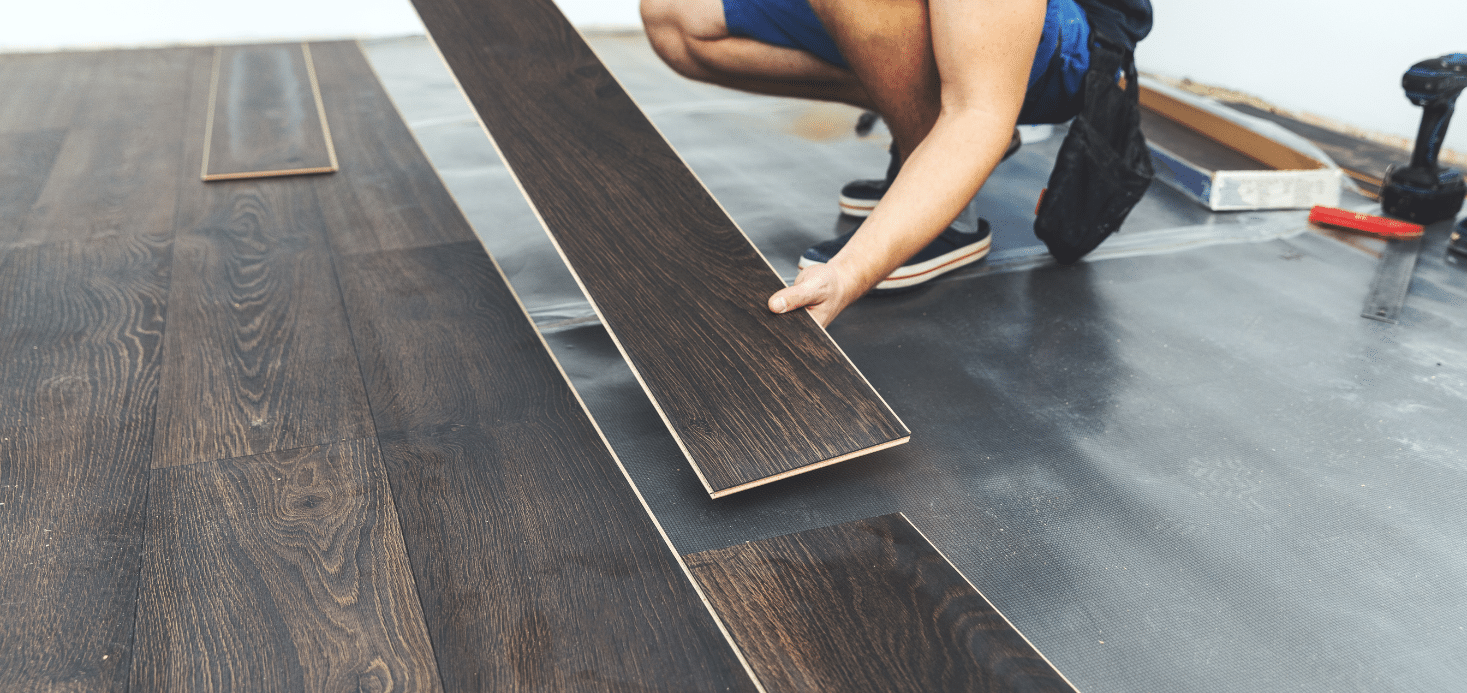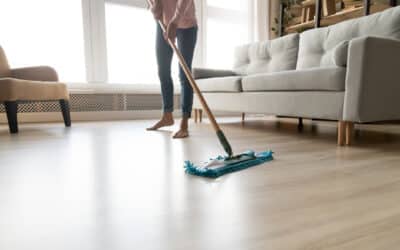Rigid core luxury vinyl flooring is engineered to have greater durability and dimensional stability than traditional vinyl flooring.
Whether you’re renovating a laundry room or an entire law office, rigid core luxury vinyl is a first-rate choice.
Easy-to-install, 100% waterproof, comfortable, attractive, and sturdy, rigid vinyl flooring is one of the most popular flooring options on the market today.
But picking out the right rigid vinyl floor can take time. To help you speed up the process, here’s 4 pro tips to help you find flooring you love.
1. Select Your Core Type & Thickness
Selecting a core type and the overall floor thickness is one of the first steps toward finding your dream floor.
When it comes to the floor’s core, you have two main choices: SPC (Stone Plastic Composite) and WPC (Wood Plastic Composite). Both are engineered to perform and remain fixed in place. They also come with a commercial grade wear layer.
The main difference between the two cores is that WPC gives you a softer feel than SPC; however, SPC is stronger and more resilient against dents and changes in temperature.
The thickness you choose is also important. Products that are at least 4mm thick with an SPC or WPC core are strong enough to hold up a pool table. For the best long-term performance, go with a product that’s at least 4mm thick and choose a core based on your preference for enhanced comfort (WPC) or durability (SPC).
2. Investigate the Wear Layer Quality
The wear layer makes all the difference in the long-term appearance of your floor. The better the wear layer, the greater resistance the surface of your floor will have against scratches and abrasions. You probably already know that wear layer thickness is a good indicator of durability, but did you know that wear layer quality is equally important?
You can have two products each with a 20-mil wear layer, but one will wear through more quickly because it has a lower quality coating protecting the surface.
A high-quality wear layer significantly increases your floor’s durability. You can quickly determine wear layer quality by investigating the additives the manufacturer uses to increase wear layer hardness and durability.
When you investigate the wear layer, take note of what’s included. Does the coating contain any aluminum oxide? Ceramic nanoparticles? Additives like these give you much greater resistance against UV rays, stains, scratches, and abrasion.
A luxury vinyl manufacturer will typically market the uniqueness of their wear layer as a proprietary coating that stands out from the competition. For example, COREtec has ArmourBead® and Happy feet has ZeroMark®.
Thickness being the same, proprietary coatings will outlast lower-priced, generic polyurethane coatings. When you’re looking at different products, you will want to choose a high-quality coating if you want the floor to last.
How thick of a wear layer do you need?
A 6-mil wear layer is good for light foot traffic. It’s suitable for a home with two adults. A 12-mil wear layer is effective for residential spaces with an active family. And a 20-mil layer or greater is the standard for commercial spaces, such as cafes with heavy foot traffic.
3. Plan Your Transitions
When you’re installing your vinyl floor, transitions are key for a seamless and beautiful floor. There are many options for vinyl floor transitions, so you need to know
- what you’re transitioning to
- the height difference from one floor to another
- the color you’re looking to match
We recommend the new, easy, and popular style of aluminum transitions for their simplicity and effectiveness. They come in three different colors. But if you think the aluminum strips detract from the décor, there’s many alternatives available to get you the look you want.
4. Install Rigid Core Luxury Vinyl Like a Pro
You can install vinyl flooring on just about any subfloor, even concrete, tiles, and plywood. Make sure whatever subfloor you have is as flat and even as possible, without divots, or you’ll eventually run into issues.
It’s also smart to install a vapor barrier beneath the vinyl to prevent any moisture from getting trapped under the floor. If the floor you’re installing over has a thick layer of epoxy, know that the epoxy will not be a guaranteed vapor barrier. It’s best to use a vapor barrier to be sure.
Choose underlayment wisely. If you want to avoid a floor that feels like you’re walking on concrete, choose underlayment with added cushioning or make sure your vinyl flooring product comes with an attached pad.
The underlayment is the layer between the flooring and the subfloor. Many products come with an attached underlayment, and some products can have additional underlayment. Read the manufacturer’s instructions to be sure you don’t void the warranty.
For a floor with maximum comfort and sound deadening properties, you will want to become familiar with the options available, which will depend on your subfloor and the floor you choose.
We recommend Whisper Step as the underlayment of choice for rigid vinyl floors. If you have a concrete subfloor, we also recommend installing a 6 mil plastic sheeting for a moisture barrier.



